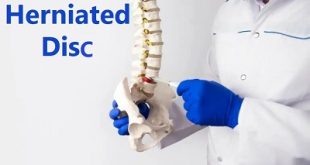Overview
Hiatus hernia is the term used to describe a condition where part of the stomach pushes up into the lower chest through a weakness in the diaphragm. The diaphragm is the large flat muscle that separates the lungs from the tummy (abdomen) and helps us to breathe. Not everyone with a hiatus hernia develops symptoms. However, if you have a hiatus hernia you are more prone to reflux acid into your gullet (oesophagus), which can cause heartburn and other symptoms. If symptoms do occur, treatment with acid-suppressing medication usually works well.
Types of Hiatus Hernia
There are 2 main types of hiatus hernia. They are:
- Sliding hiatus hernias – hernias that move up and down, in and out of the chest area (more than 80% of hiatus hernias are of this type)
- Para-oesophageal hiatus hernias – also called rolling hiatus hernias, where part of the stomach pushes up through the hole in the diaphragm next to the oesophagus (about 5-15% of hiatus hernias are of this type)
These pages mainly focus on sliding hiatus hernias. They can usually be diagnosed using an X-ray or an endoscopy, where a long, thin flexible tube with a light and video camera at one end is used to examine the inside of the body.
Causes and risk factors of Hiatus Hernia
The exact cause of many hiatal hernias is not known. In some people, injury or other damage may weaken muscle tissue. This makes it possible for your stomach to push through your diaphragm.
Another cause is putting too much pressure (repeatedly) on the muscles around your stomach. This can happen when:
- Coughing
- Vomiting
- Straining during bowel movements
- Lifting heavy objects
Some people are also born with an abnormally large hiatus. This makes it easier for the stomach to move through it.
Factors that can increase your risk of a hiatal hernia include:
- Obesity
- Aging
- Smoking
You may not avoid a hiatal hernia entirely, but you can avoid making a hernia worse by:
- Losing excess weight
- Not straining during bowel movements
- Getting help when lifting heavy objects
- Avoiding tight belts and certain abdominal exercises
What are the symptoms of a Hiatus Hernia?
In many cases, a hiatal hernia has no symptoms.
Some people do have symptoms. These may include:
- Burping
- Feeling nauseous
- Vomiting
- Backflow (reflux) of acid or stomach contents into the esophagus or throat
- Heartburn
- Regurgitation
- Trouble swallowing
Paraesophageal hernias may have more severe symptoms. These can include:
- Having trouble swallowing sometimes, most often with solid foods
- Feeling full after eating only a small amount of food
- Belly (abdominal) or chest pain
- Abdominal bleeding
- Blood loss (anemia)
In some cases, a paraesophageal hernia can lead to a medical emergency. The stomach or abdominal organs may turn or twist, causing very bad pain. There is a danger that the stomach’s blood supply may be cut off (strangulation). This is an emergency. You will likely need surgery right away.
The symptoms of a hiatal hernia may look like other health problems. Always see your healthcare provider to be sure.
Possible Complications
In most cases, a hiatal hernia won’t lead to other health problems.
In some cases, it can cause other problems such as:
- Pulmonary (lung) aspiration
- Severe GERD (Gastroesophageal Reflux Disease)
- Oesophagitis
- Cough
- Narrowing of oesophagus (a stricture)
- Barrett’s oesophagus
- Slow bleeding and iron deficiency anemia (due to a large hernia)
- Cancer of the oesophagus
- Strangulation (closing off) of the hernia
Diagnosis
A hiatal hernia is often discovered during a test or procedure to determine the cause of heartburn or chest or upper abdominal pain. These tests or procedures include:
- X-ray of your upper digestive system. X-rays are taken after you drink a chalky liquid that coats and fills the inside lining of your digestive tract. The coating allows your doctor to see a silhouette of your esophagus, stomach and upper intestine.
- Upper endoscopy. Your doctor inserts a thin, flexible tube equipped with a light and camera (endoscope) down your throat, to examine the inside of your esophagus and stomach and check for inflammation.
- Esophageal manometry. This test measures the rhythmic muscle contractions in your esophagus when you swallow. Esophageal manometry also measures the coordination and force exerted by the muscles of your esophagus.
How is a Hiatus Hernia treated?
Most hiatal hernias do not cause problems and rarely need treatment. However, since some patients with a hiatal hernia have symptoms of GERD, treatment starts with methods used to manage GERD. These include making such lifestyle changes as:
- Losing weight if you’re overweight.
- Decreasing the portion sizes of meals.
- Avoiding certain acidic foods—such as tomato sauce and citrus fruits or juices—that can irritate the esophageal lining.
- Limiting fried and fatty foods, foods or drinks containing caffeine (including chocolate), peppermint, carbonated beverages, alcoholic beverages, ketchup and mustard, and vinegar.
- Eating meals at least three to four hours before lying down, and avoiding bedtime snacks.
- Keeping your head six inches higher than the rest of your body when lying on your back. Raising the level of your head helps gravity keep your stomach’s contents in the stomach. Raising the head of your bed by angling your mattress works best—piling your pillows doesn’t work as well because it makes you crunch your middle instead of simply angling your body upwards.
- Quitting smoking.
- Not wearing a tight belt or tight clothing that can increase the pressure on the abdomen — such as control top hosiery and body shapers.
- Taking medications after eating to reduce acid in the stomach. These over-the-counter medications include antacids, Gaviscon®, or H-blockers (such as Pepcid AC® or Zantac®).
Sometimes, a medication called a proton-pump inhibitor might be used to treat hiatal hernia. This medication is another way to decrease the amount of stomach acid you have, which can help prevent reflux. When you take this medication, your body doesn’t make as much stomach acid as normal. This is similar to H-blocker medications.
Can over-the-counter medications help relieve my Hiatus Hernia symptoms?
In many cases, over-the-counter medications can help you with some symptoms of hiatal hernia. Antacids are the most common medication you might use for relief. However, if you take over-the-counter medications for longer than two weeks without any improvement, see your healthcare provider. Prescription medications are typically the next step. These can include:
- Pantoprazole (Protonix®).
- Rabeprazole (Aciphex®).
- Esomeprazole (Nexium®).
- Omeprazole (Prilosec®).
- Lansoprazole (Prevacid®).
When is surgery for a Hiatus Hernia needed?
If the portion of the stomach entering the esophagus is being squeezed so tightly that the blood supply is being cut off, you’ll need to have surgery. Surgery may also be needed in people with a hiatal hernia who have severe, long-lasting (chronic) esophageal reflux whose symptoms are not relieved by medical treatments. The goal of this surgery is to correct gastroesophageal reflux by creating an improved valve mechanism at the bottom of the esophagus. Think of this valve as a swinging door. It opens to let food pass down into the stomach and then closes to keep stomach contents from going back up the esophagus. When this valve doesn’t work correctly, your stomach contents can go the wrong way and damage your esophagus. If left untreated, chronic gastroesophageal reflux can cause complications such as esophagitis (inflammation), esophageal ulcers, bleeding or scarring of the esophagus.
How is surgery for a Hiatus Hernia performed?
Surgery for repairing a hiatal hernia involves:
- Pulling the hiatal hernia back into the abdomen.
- Improving the valve at the bottom of the esophagus.
- Closing the hole in the diaphragm muscle.
During surgery, your surgeon will wrap the upper part of the stomach (called the fundus) around the lower portion of the esophagus. This creates a permanently tight sphincter (the valve) so that stomach contents will not move back (reflux) into the esophagus.
Called a fundoplication, there are two versions of this surgery. An open fundoplication surgery involves a larger incision. This type of procedure may need to be done in some very severe cases and it allows for greater visibility during surgery. However, open surgeries require a longer recovery time in the hospital. In many cases, the surgeon will decide to use a laparoscopic approach instead.
A laparoscopic surgery is done through several small incisions instead of one big cut. This is considered a minimally invasive option. The specific laparoscopic procedure used to repair a hiatal hernia is called the Nissen fundoplication. This procedure creates a permanent solution to your hiatal hernia symptoms. During the procedure, your surgeon will make five or six tiny incisions in the abdomen. The laparoscope (a tool that allows the surgical team to see your internal organs on a screen in the operating room) and other surgical instruments are inserted through the small incisions. The fundus is wrapped around the esophagus and the sphincter is tightened during surgery. The advantages of laparoscopic surgery compared to an open surgery include:
- Smaller incisions
- Less risk of infection
- Less pain and scarring
- A shorter recovery
Prevention of Hiatus Hernia
As obesity is a risk factor for a hiatal hernia, weight loss could help reduce the risk for some people. The other known causes and risk factors of these hernias are not preventable.
Reducing heartburn
Anyone who has a hiatal hernia may find that making changes to their diet and drinking habits can help reduce heartburn symptoms. A person is likely to benefit from decreasing the following:
- Overall meal size
- Portion size
- Consumption of specific foods that trigger reflux
Reducing the intake of the following foods and beverages can often help minimize symptoms:
- Alcohol
- Caffeine
- Chocolate
- Tomatoes
- Fatty or spicy foods
The timing of eating and drinking can also be a factor because mealtimes affect when acid might flow back into the food pipe.
People who experience heartburn should sit upright while eating and have their meals at least 3 hours before lying down to sleep.
Raising the head end of the mattress so that the bed slopes slightly down toward the feet might also help reduce symptoms. However, the whole body needs to be at an incline, not just the head.
 Diseases Treatments Dictionary This is complete solution to read all diseases treatments Which covers Prevention, Causes, Symptoms, Medical Terms, Drugs, Prescription, Natural Remedies with cures and Treatments. Most of the common diseases were listed in names, split with categories.
Diseases Treatments Dictionary This is complete solution to read all diseases treatments Which covers Prevention, Causes, Symptoms, Medical Terms, Drugs, Prescription, Natural Remedies with cures and Treatments. Most of the common diseases were listed in names, split with categories.







